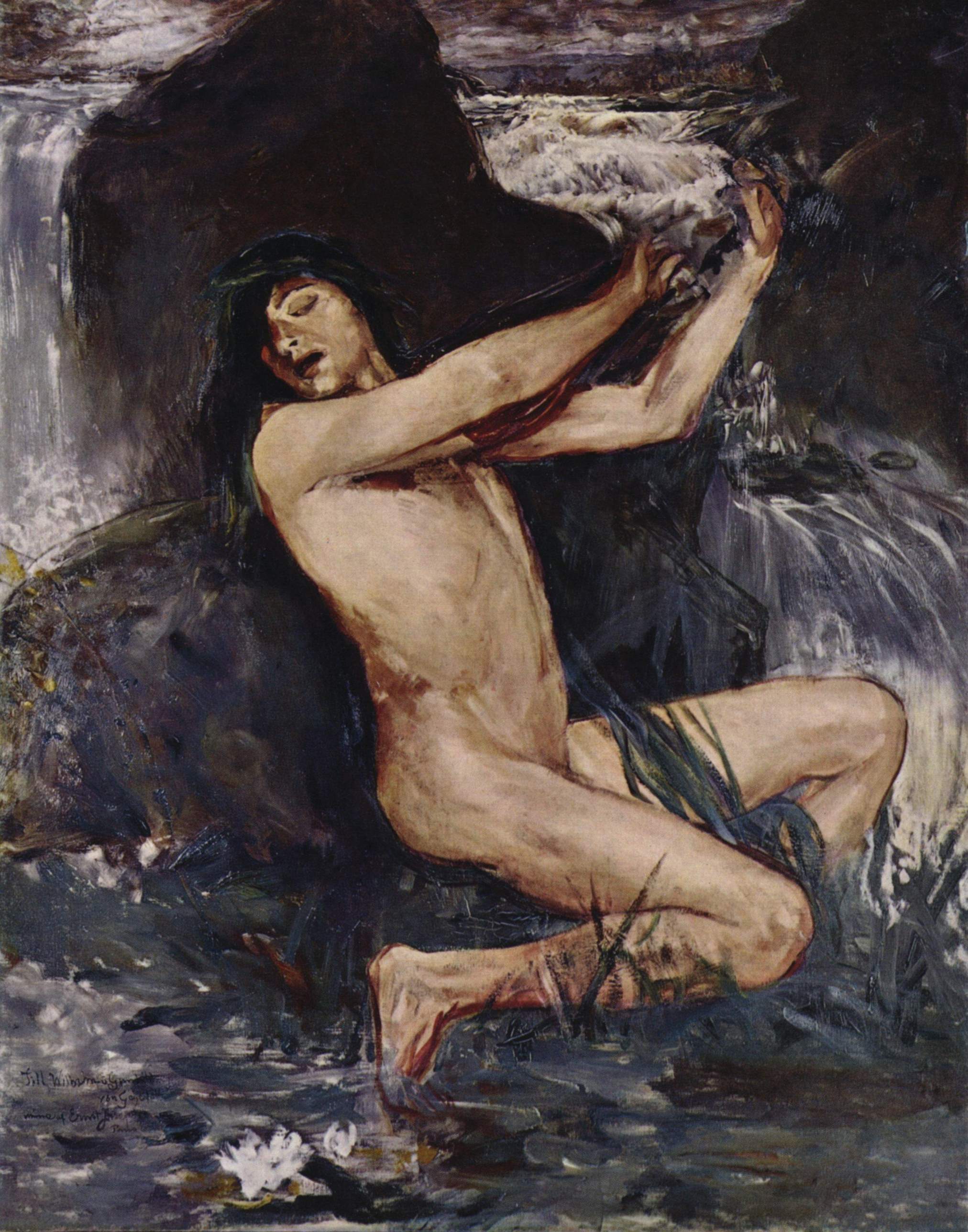"Symbolism" by Norbert Wolf is an attempted introduction to the elusive 19th century art style known by that name. The book is published by Taschen. I've been trying to comprehend Symbolism for a couple of books and art exhibitions now, and was even reamed out (literally rather than symbolically) when I posted a bewildered review on the topic on Amazon. It seems I'm in good company though, since Symbolism isn't supposed to be understood in the first place. At least not by Realists on an Amazon reviewing spree...
Symbolism wasn't really a distinct "style", but rather an attitude. The lowest common denominators were elitism (the artist as prophet or genius), subjectivism and anti-Realism. There was a strong and frequently morbid fascination with the subconscious, including sexuality and death. There was also an aesthetizing tendency, where Realism was given up in favor of, say, bright colors which were pleasing to the eye but had nothing to do with reality. Apart from the painter's own subconscious, other sources of inspiration included fairytales, myths and wild nature.
Symbolism was frequently paradoxical. It had connections to both occultism, anti-modernist Catholicism and Decadence (including actual decadence with a lower case d). Wolf describes it as a substitute religion. Another paradox was that Symbolism didn't necessarily reject the artistic conventions of Academic art, or those of Realism. Symbolist art is seldom abstract. What makes a painting or sculpture "Symbolist" is the attitude. Rather than idealizing the subject-matter, as in Academic art, Symbolists either demonize it or render it fundamentally ambigious. "Reality" becomes dreamlike, elusive, perhaps even perverse. Symbolism has little to do with actual symbols in the strict sense of that term. Less paradoxical, perhaps, is the patriarchal tendency in which women are depicted as sinful and lustful creatures, enchanting or threatening to the man. Freud could have had some fun with this material!
One thing I don't understand is why the Pre-Raphaelites are considered Symbolist. Indeed, the jacket of this book shows "Proserpina" by Dante Gabriel Rossetti. The attitude of the Pre-Raphaelite Brotherhood strikes me as very different from that of the Symbolists sensu stricto. For instance, the Pre-Raphaelites had a more "populist" view of art.
After an introduction, Wolf tries to analyze the work of 32 Symbolists. It's a bewildering maze of strange landscapes, weird mixtures of different styles in the same artwork, religious themes, and problematic sexuality. Pablo Picasso's "Blue Period" makes a brief guest appearence. Somewhat surprisingly, two of the featured painters are American. One is Swedish. Yes, that would be Ernst Abraham Josephson, whose famous painting "Näcken" is called "The Nix" in English.
I have no idea if the reader will really grokk the Idea (or was it the Symbol) after reading this short little volume, but it works well enough as a teaser trailer to the collective unconscious of the fin-de-siecle artistic demimonde...

Off topic. The Nobel Prize Committee in Norway took the easy way out and gave the peace prize to the UN's World Food Program.
ReplyDeleteThey could have decided to go out with a bang (or go full 2020) and award it to the WHO or the BLM movement.
ReplyDeleteThe Swedish Academy also decided on a safe choice (I think). No neo-Nazi Hindutva Hutu genocidaires in play? I'm disappointed!
ReplyDeleteJaha. Regeringskris nu igen.
ReplyDelete